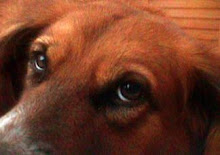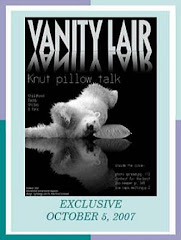The den of Lily the Black Bear in 2010
source
It is hibernation time for lots of bears at this moment, in this context please find here an older article about self-healing in Black Bears during hibernation.
It is hibernation time for lots of bears at this moment, in this context please find here an older article about self-healing in Black Bears during hibernation.
Wundersame Heilung im Schlaf
Während sich Bären im Winterschlaf befinden, zapft ihr Körper offenbar den molekularen Jungbrunnen an. Verletzungen verheilen ohne Infektionen oder Narben. Wie die Tiere das bewerkstelligen, ist unbekannt.
Zoologen aus Minnesota und Wyoming verfolgen das Verhalten der ansässigen Schwarzbären seit 25 Jahren. Erst kürzlich fiel ihnen die außerordentliche Regenerationsfähigkeit der Tiere auf: Wie die US-Forscher im "Journal of Integrative Zoology" schreiben, hätten die Tiere vor dem Winterschlaf oft tiefe, entzündete Wunden, verursacht durch Schüsse von Jägern oder durch Kämpfe mit Artgenossen.
Doch ein paar Monate später seien diese regelmäßig verschwunden. Kaum Narben, keine auffälligen Spuren, nichts. Bemerkenswerter Weise nicht nur dann, wenn die Forscher die Wunde gesäubert und mit Antibiotika behandelt hatten. Die Heilung scheint von der medizinischen Versorgung gänzlich unabhängig gewesen zu sein. Experimente bestätigen das: David L. Garshelis von der University of Minnesota fügte 14 Bären zu Beginn ihres Winterschlafes kleine Hautschnitte zu. Im März, kurz vor dem Erwachen, waren sie verschwunden. "Das ist überraschend, denn während des Winterschlafes ist der Metabolismus verlangsamt", so Garshelis gegenüber der BBC.
Aus der Humanmedizin sei bekannt, dass mangelnde Energieversorgung und niedrige Körpertemperatur die Wundheilung hemmen, nicht fördern. Doch den Bären scheint der Sparflammenmodus nichts auszumachen. Garshelis: "Die Bären dämmern sechs Monate dahin und verlieren keine Muskel- oder Knochenmasse. Ich vermute, dass auch das eine spezielle Anpassung an den Winterschlaf ist." Sie gilt es nun zu analysieren. Die, wie es so schön heißt, "medizinischen Implikationen" sind naheliegend.
Während sich Bären im Winterschlaf befinden, zapft ihr Körper offenbar den molekularen Jungbrunnen an. Verletzungen verheilen ohne Infektionen oder Narben. Wie die Tiere das bewerkstelligen, ist unbekannt.
Zoologen aus Minnesota und Wyoming verfolgen das Verhalten der ansässigen Schwarzbären seit 25 Jahren. Erst kürzlich fiel ihnen die außerordentliche Regenerationsfähigkeit der Tiere auf: Wie die US-Forscher im "Journal of Integrative Zoology" schreiben, hätten die Tiere vor dem Winterschlaf oft tiefe, entzündete Wunden, verursacht durch Schüsse von Jägern oder durch Kämpfe mit Artgenossen.
Doch ein paar Monate später seien diese regelmäßig verschwunden. Kaum Narben, keine auffälligen Spuren, nichts. Bemerkenswerter Weise nicht nur dann, wenn die Forscher die Wunde gesäubert und mit Antibiotika behandelt hatten. Die Heilung scheint von der medizinischen Versorgung gänzlich unabhängig gewesen zu sein. Experimente bestätigen das: David L. Garshelis von der University of Minnesota fügte 14 Bären zu Beginn ihres Winterschlafes kleine Hautschnitte zu. Im März, kurz vor dem Erwachen, waren sie verschwunden. "Das ist überraschend, denn während des Winterschlafes ist der Metabolismus verlangsamt", so Garshelis gegenüber der BBC.
Aus der Humanmedizin sei bekannt, dass mangelnde Energieversorgung und niedrige Körpertemperatur die Wundheilung hemmen, nicht fördern. Doch den Bären scheint der Sparflammenmodus nichts auszumachen. Garshelis: "Die Bären dämmern sechs Monate dahin und verlieren keine Muskel- oder Knochenmasse. Ich vermute, dass auch das eine spezielle Anpassung an den Winterschlaf ist." Sie gilt es nun zu analysieren. Die, wie es so schön heißt, "medizinischen Implikationen" sind naheliegend.
(source)
June's cub in den Autumn 2011
Bears use hibernation to regenerate their wounds without a hint of scarring
When bears go to sleep for months at a time, their heart rate, metabolism, and body temperature drop to almost nothing. Despite this, their bodies apparently go into overdrive in other areas, healing wounds so that they're good as new.
This really should be impossible, considering most mammals pretty much lose the ability to heal wound effectively the moment their body temperatures start to drop. And yet somehow American black bears use hibernation as the time to heal all wounds, unleashing a supercharged immune response that erases all hints of infection and injuries. In their new paper, researchers from the Universities of Wyoming and Minnesota explain how they made this remarkable discovery:
"We identified a few animals each year with injuries resulting from gunshots or arrows from hunters; bite marks from other bears or predators. These wounds were considered to have been incurred some time before the bears denned, and were often infected or inflamed...in early winter. Yet typically, when we revisited bears in their dens a few months later, most wounds had completely resolved whether or not we [cleaned them], sutured the areas or administered antibiotics."
The researchers were then able to confirm these results experimentally by tracking cuts on a small group of bears over a few months. The bears all entered hibernation with the wounds still in evidence, but by the time they awoke the wounds were gone, there was no sign of infection, and generally there was only the slightest wisp of scar tissue, if anything. Otherwise, it was as though the cuts had never happened - even hair had started to regrow over the wound. Exactly how bears pull off this healing trick is still an open question, but the researchers hope that their secret might be adapted to help humans better heal from their wounds as well, although hopefully without having to sleep for six months, of course.
Lily's den in January 2013
source
On this pic one can see a little field mouse in Lily's den, if Mansfield as she was named by fans of the Lily Updates, knows similar self-healing experiences is (not) yet known..))
This really should be impossible, considering most mammals pretty much lose the ability to heal wound effectively the moment their body temperatures start to drop. And yet somehow American black bears use hibernation as the time to heal all wounds, unleashing a supercharged immune response that erases all hints of infection and injuries. In their new paper, researchers from the Universities of Wyoming and Minnesota explain how they made this remarkable discovery:
"We identified a few animals each year with injuries resulting from gunshots or arrows from hunters; bite marks from other bears or predators. These wounds were considered to have been incurred some time before the bears denned, and were often infected or inflamed...in early winter. Yet typically, when we revisited bears in their dens a few months later, most wounds had completely resolved whether or not we [cleaned them], sutured the areas or administered antibiotics."
The researchers were then able to confirm these results experimentally by tracking cuts on a small group of bears over a few months. The bears all entered hibernation with the wounds still in evidence, but by the time they awoke the wounds were gone, there was no sign of infection, and generally there was only the slightest wisp of scar tissue, if anything. Otherwise, it was as though the cuts had never happened - even hair had started to regrow over the wound. Exactly how bears pull off this healing trick is still an open question, but the researchers hope that their secret might be adapted to help humans better heal from their wounds as well, although hopefully without having to sleep for six months, of course.
Lily's den in January 2013
source
Auf diesem Foto kann man eine kleine Feldmaus in Lily's Höhle erkennen, ob Mansfield, wie sie von Freunden der Lily Updates genannt wurde, ähnliche Selbstheilungserfahrungen kennt, ist (noch) nicht bekannt...))-
On this pic one can see a little field mouse in Lily's den, if Mansfield as she was named by fans of the Lily Updates, knows similar self-healing experiences is (not) yet known..))
Sources:
Abstract
- Integrative Zoology: Wound healing during hibernation by black bears (Ursus
americanus) in the wild: elicitation of reduced scar formation
Photo source & related:
Photo source & related:
- Schwarzbär-Höhlenfotos aus den Northwoods inkl. dt. übersetzte Updates zu "Lily the Black Bear" von Lynn Rogers und Susie Mansfield im Storchenhof Papendorf







































































